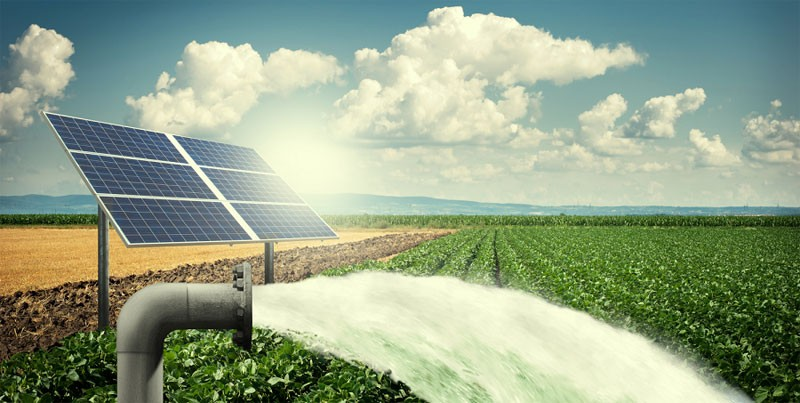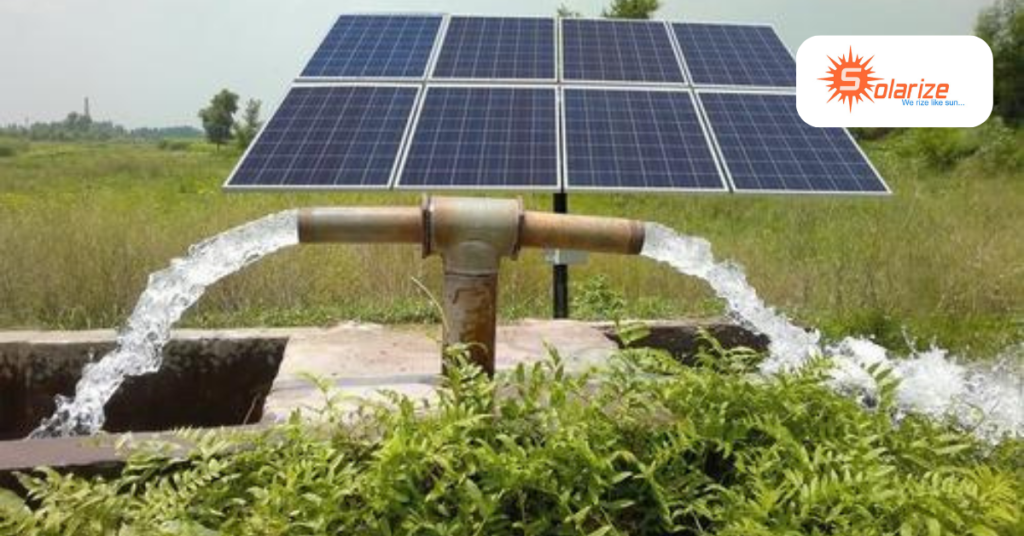With the global trend towards environmentally conscious and sustainable technologies, solar submersible pumps have become a viable option for water management. These pumps provide a greener option to conventional electric or diesel-powered pumps by using solar energy to power the extraction of water from wells or other sources. Adoption of this technology, however, may be significantly impacted by the price of solar panels. This tutorial explains the operation of solar submersible pumps, their advantages, and Why Solar Panels Cost So Much , how knowing the reasons behind the high cost of solar panels can help you make a wise purchase.

What Are Solar Submersible Pumps?
Solar submersible pumps use energy from solar panels to function underwater, drawing water out of boreholes or wells. These pumps are quite effective in locations with lots of sunlight since they have a solar-powered engine that powers the pump’s mechanism. They are frequently utilized in distant locations with limited access to conventional power sources, agricultural irrigation, and rural water supplies.
How Solar Submersible Pumps Work
In order for solar submersible pumps to lift water from below the surface, sunlight must first be converted into electrical energy. Usually, the system consists of:
Solar panels: These collect solar radiation and use it to generate DC electricity.
Pump Controller: Maintains steady performance and guards against damage to the pump by controlling the power coming from the solar panels.
Submersible Pump: This pump is submerged and uses a sequence of stages or impellers to raise water to the surface.
Sustainability: These pumps cut greenhouse gas emissions and their dependency on fossil fuels by harnessing solar energy. They aid in resource conservation and help create a cleaner environment.
Cost-Effectiveness: In the long run, solar submersible pumps may prove to be more cost-effective than electric or diesel pumps, particularly in isolated areas. They save maintenance costs and do away with the requirement to acquire gasoline.
Reliability: Extreme weather is one of the scenarios under which solar submersible pumps are intended to function. They provide a steady and dependable supply of water when maintained properly.
Low Operating Costs: The main expense after installation is the initial cost of the pump system and solar panels. On the other hand, since solar energy is free, there aren’t many continuing costs.
Understanding Why Solar Panels Cost So Much
It’s important to comprehend why solar panels are expensive in order to optimise the effectiveness and return on investment of solar submersible pumps. The cost of solar panels is expensive for a number of reasons:
Manufacturing Costs: Advanced technologies and premium components like silicon are used in the manufacture of solar panels. The sophisticated manufacturing techniques combined with these components raise the overall cost.
Technological Advancements: Cost increases are frequently associated with improvements in solar technology, such as increased durability and efficiency. These developments can raise the initial cost of solar panels even as they improve performance.
Infrastructure and Installation: For best results, a proper installation is required. This covers the price of expert labour, wiring, and mounting systems. The cost is further increased by supporting infrastructure such as controllers and inverters.
Economies of Scale: Although economies of scale have helped to lower the cost of solar panels over time, supply chain problems and changes in the price of raw materials can still have an impact on pricing. Making economical choices can be aided by having a thorough understanding of these market dynamics.
Regulatory and Certification Costs: Solar panels are guaranteed to meet quality and safety standards by adhering to industry standards and gaining certifications. The total cost frequently includes these expenses.
Maximizing Efficiency with Solar Submersible Pumps
Take into account the following advice to get the most of your solar submersible pump system:
Select the Appropriate System: Choose a solar submersible pump system based on how much sun exposure and how much water you require. To make sure the system is properly sized and configured for your unique requirements, consult with professionals.
Regular Maintenance: To guarantee optimum performance, do routine maintenance on the pump system and the solar panels. This include inspecting the panels for damage, cleaning them, and doing any necessary pump maintenance.
Maximise sunshine Exposure: Make sure solar panels are positioned to get as much sunshine as possible. To maximise energy generation, stay out of the shade provided by buildings or trees.
Track Performance: Keep tabs on your solar submersible pump system’s performance with the help of monitoring tools. This is beneficial.
For managing water resources, solar submersible pumps offer an affordable and environmentally friendly option. Knowing the reasons behind the high cost of solar panels will help you make wise judgements when it comes to purchasing this technology. The long-term advantages of lower running costs and environmental effect make solar submersible pumps an invaluable addition to any sustainable water system, even with their initial high cost.
Although purchasing solar technology is a major investment that needs to be carefully considered, done well, you can save a lot of money and help create a more environmentally friendly future.

